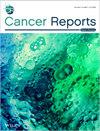Unveiling the Burden of Leukemia in Eritrea (2010–2020): Chronic Leukemia Stability, Rising ALL Incidence, and the Enigma of CML in a Low-Resource Setting
Abstract
Background and Aims
Little research has been conducted on the epidemiology of leukemia in Eritrea. In this retrospective study, we evaluated the burden and trends of acute lymphoblastic leukemia (ALL), acute myelogenous leukemia (AML), chronic myelogenous leukemia (CML), chronic lymphocytic leukemia (CLL), and overall leukemia in Eritrea.
Methods and Results
An audit of leukemia cases recorded in laboratory logbooks at the National Health Laboratory and Orotta Referral and Teaching Hospital between January 2010 and December 2020 was performed. In addition to leukemia subtypes, variables such as age, sex, and year of incidence were retrieved. Relevant estimates assessed included crude incidence rates (CIR), age-standardized rates (ASIR), and estimated annual percentage change (EAPC). In total, 372 confirmed cases of leukemia were recorded between 2010 and 2020. The median (interquartile range [IQR]) age, maximum–minimum age, and male-to-female ratio were as follows: 48 years (24.5–60 years), 2–91 years, and 210:161 (1.3:1), respectively. The estimated all-age CIR and ASIR over the study period were 9.22 per 100,000 and 30.1 per 100,000, respectively. Analysis of cumulative (2010–2020) CIR per 100,000 (ASIR per 100 000) for ALL, AML, CLL, and CML were as follows: 2.01 (3.87); 0.94 (2.38); 2.94 (15.37); and 3.61 (24.03). Additionally, the median (IQR) age differed significantly across leukemia subtypes: ALL (23.0 years, IQR: 10.0–39.0); AML (30 years, IQR: 20–56 years); CLL (59.0 years, IQR: 40.75–66.75 years); and CML (49 years, IQR: 39.25–60 years), p value (Kruskal–Wallis) < 0.05. The proportion of leukemia types did not differ significantly between males and females. Unlike other leukemia subtypes, the evaluation of ALL's EAPC demonstrated that the incidence of leukemia increased over time, 21.9 (95% CI: 3.1–44.1), p value = 0.025.
Conclusions
The burden of leukemia in Eritrea remained relatively stable. However, due to underreporting and underdiagnosis, we believe the true burden of leukemia is likely higher. Furthermore, an upward trend in the burden of ALL was observed. Lastly, expanding diagnostic services to other sub-zones, establishing a national cancer registry, and prioritizing research remain critical in Eritrea.


 求助内容:
求助内容: 应助结果提醒方式:
应助结果提醒方式:


